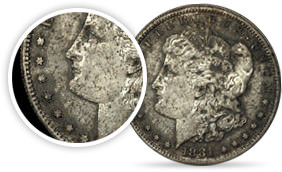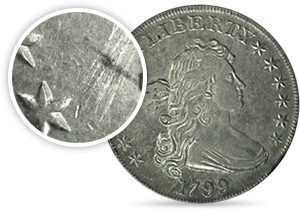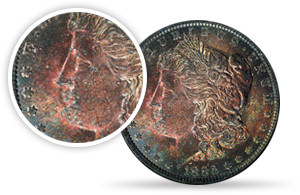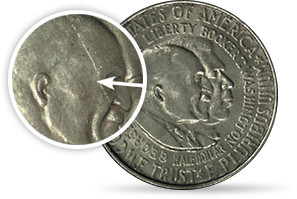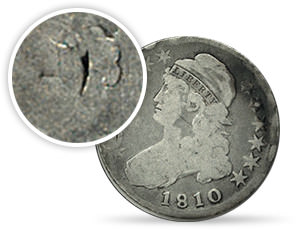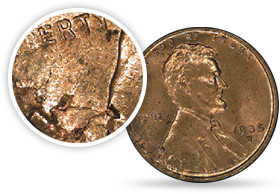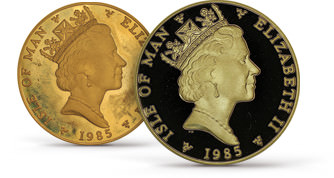Environmental Effects
Conditions detrimental to coins are those involving unsuitable storage containers, extremes of heat and humidity, as well as atmospheric pollutants and saltwater. Sea-salvaged and treasure coins are often victims of environmental contamination that leave their surfaces in a state that makes them ineligible for numeric grading. This is true also of coins stored in highly reactive paper or plastic storage media. Read more...
BRONZE DISEASE is a term describing a form of corrosion unique to copper or bronze coins that typically affects ancient coins.
CORROSION is a problem for most metals, though gold and platinum are nearly immune to its effects. A natural chemical reaction, it causes the surfaces of a coin to form new molecular compounds. When corrosion is severe or unattractive, it results in coins certifiable only under Details Grading. NGC's graders may narrow down the problem area by using the terms OBV CORROSION, REV CORROSION and EDGE CORROSION.
ENVIRONMENTAL DAMAGE is the result of a hostile storage environment, where the exact cause of the surface damage is indeterminable.
STAINED coins display discoloration but not corrosion. More often than not such staining is irremovable. When isolated to one side, it is described as OBV STAINED or REV STAINED.
Read less...

